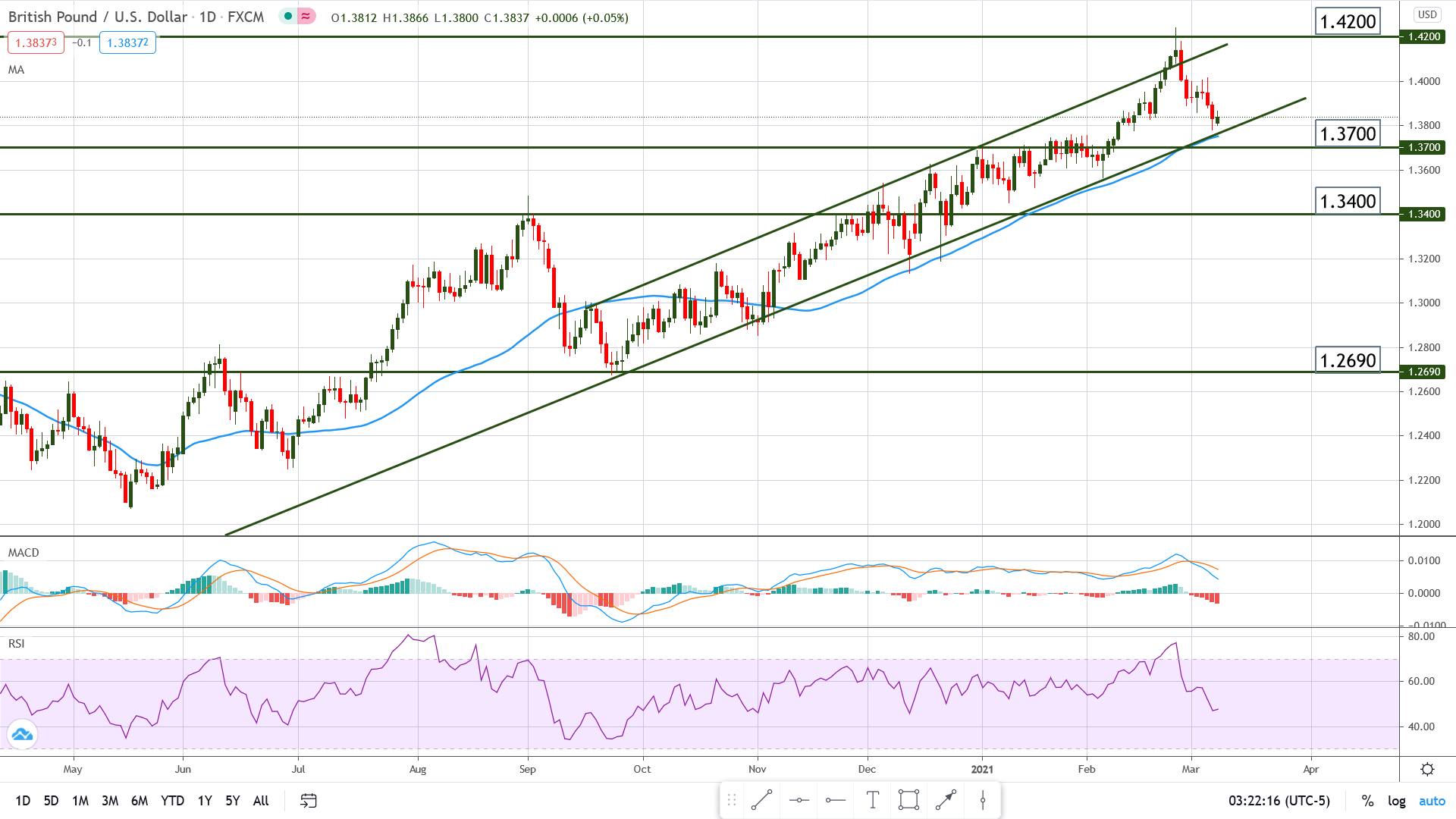The US Dollar Reversal Is Picking Up Speed
U.S. Inflation Data Eyed for Next Direction
by Bogdan Giulvezan
The US Dollar is continuing the assault on its major counterparts, boosted by last week’s surprisingly positive U.S. jobs data (NFP expected change: 197K; actual: 379K) and by a $1.9 trillion relief plan that was passed by the Senate.
Rising U.S. yields further strengthened the greenback and helped bring it to a three-month high, trading at 1.1875 against the Euro at the time of writing. While U.S. yields rose, German yields dropped by 4 basis points, adding speed to the EUR/USD decline.
The week ahead is filled with important data for the Euro and US Dollar, thus let’s take a look at the bits that may have an impact on the Forex market.
Key Data for the Week Ahead
Tuesday, March 9 the Eurozone Revised GDP will be released, and although this is the third version in the series (Preliminary Flash, Flash, and Revised), it still tends to have a notable impact on the Euro. The release is scheduled at 10:00 am GMT and the expected change is -0.6%; numbers above expectations tend to strengthen the single currency.
Wednesday, March 10 at 1:30 pm GMT we take a look at U.S. inflation with the release of the Consumer Price Index (CPI) and the Core version of the same indicator. The CPI tracks changes in the price paid by consumers for a basket of goods and services, while the Core version excludes food and energy from the calculation. The FOMC usually pays more attention to the latter data (Core), thus its importance is higher for traders as well. The expected change for the CPI is 0.4% and 0.2% for the Core CPI.
The last notable event of the week comes Thursday in the form of the ECB Monetary Policy Statement, which contains the interest rate decision as well as details about the reasons that influenced it. The release is scheduled at 12:45 pm GMT and will be followed 45 minutes later by the usual press conference. The ECB President will read a prepared statement and then will answer journalists’ questions, which is almost always a volatility trigger, thus caution should be used. The rate is not expected to change (0.00%) but any hints about future moves will likely be a catalyst for the Euro.
Chart Analysis – GBP/USD
After a brief break of the upper barrier of the rising channel, the pair bounced on 1.4200 resistance and returned inside the pattern, mostly due to US Dollar strength. Price is now headed towards the very strong support zone located around 1.3700, where it will encounter the confluence of three factors: the horizontal level at 1.3700, the 50 periods moving average (blue line), and the lower barrier of the rising channel.
A break of this confluence zone will show that the US Dollar bulls are taking control and that the bearish move is not simply a pullback that comes from price overextension. The MACD lines are moving south, showing good momentum and the RSI is headed in the same direction, thus increasing the probability of a break of support.
